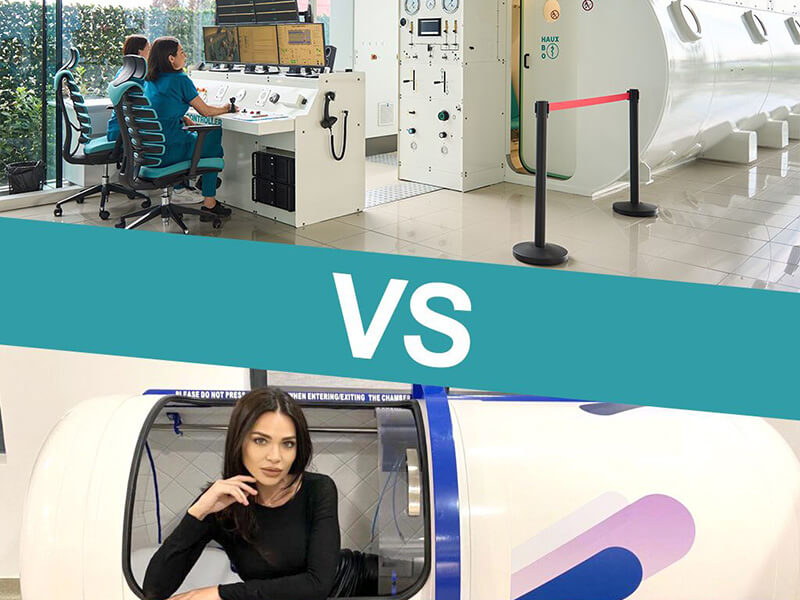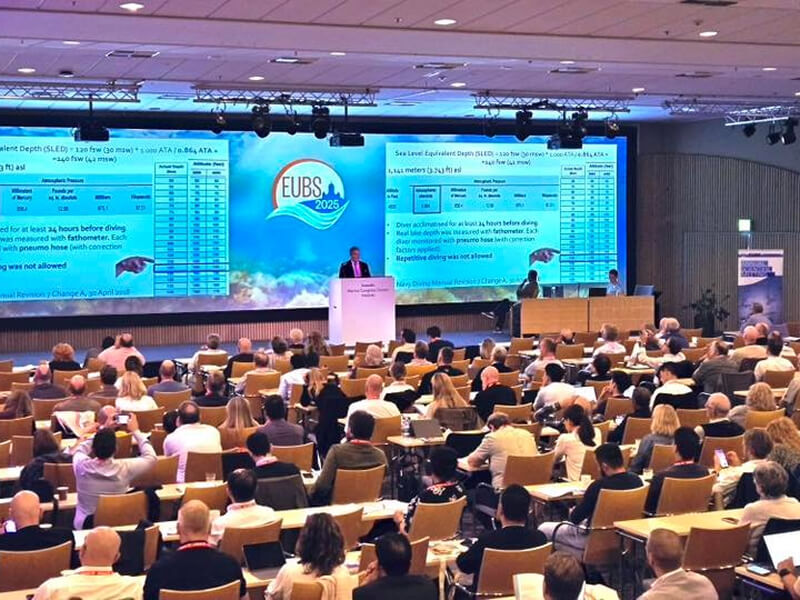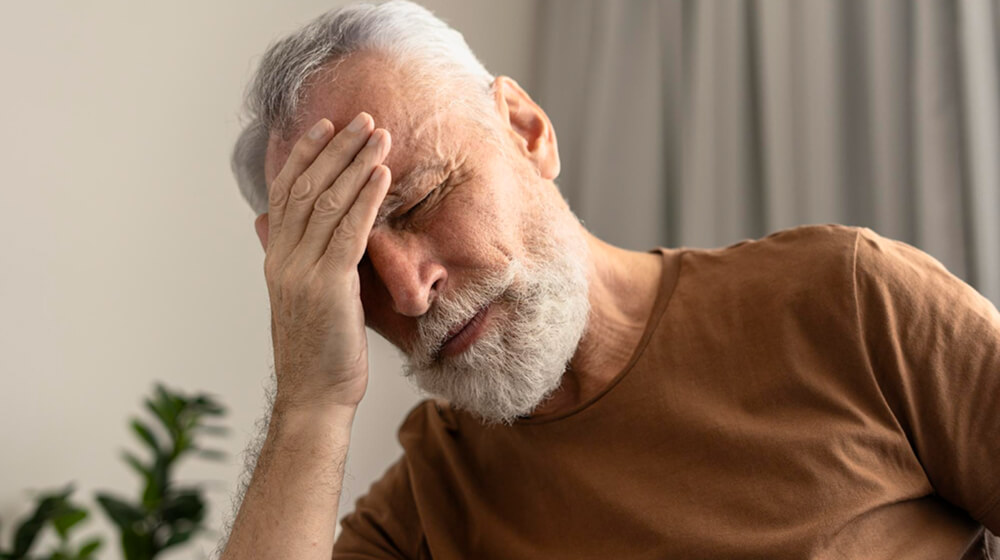
Article reviewed by: Dr. Sturz Ciprian, Dr. Tîlvescu Cătălin and Dr. Alina Vasile
Article updated on: 21-04-2025
Stroke (CVA): What it is, how to recognize it, and how it can be prevented
- What is a stroke?
- Types of stroke
- What are the symptoms of a stroke?
- Causes and risk factors of stroke
- Diagnostic methods for stroke
- Treatment options for stroke
- Recovery after a stroke
- Hyperbaric therapy and stroke recovery
- Stroke prevention – evidence-based practical advice
Stroke (CVA) is a medical emergency that can radically change a person's life in just a few minutes. Although often perceived as a problem that affects only the elderly, the reality is that stroke can strike anyone, regardless of age. Rapid recognition of symptoms and adopting a healthy lifestyle can make the difference between life and death or between complete recovery and permanent disability.
Globally, stroke represents the second leading cause of death (about 11-12% of total deaths) and the main cause of long-term disability. Recent statistics are concerning: the risk of suffering a stroke during one's lifetime is estimated at 1 in 4 people. In 2019, approximately 12.2 million new cases of stroke were recorded worldwide, and the total number of people who have survived a stroke exceeded 100 million.
Romania is also facing a major burden due to this condition: our country has one of the highest incidences of stroke in Europe (approximately 184 cases per 100,000 inhabitants annually, according to 2021 data), and stroke is responsible for over 21% of all deaths at the national level (almost 50,000 deaths annually, according to World Health Organization data). These figures highlight the need to know the warning signs, causes, and methods of prevention and treatment of stroke.
What is a stroke?
Stroke (CVA) is a medical emergency that occurs when blood flow to a part of the brain is suddenly interrupted or when a blood vessel in the brain ruptures, causing bleeding. Without oxygen and nutrients, brain cells begin to die within minutes, which can lead to permanent brain damage, severe disabilities, and, in serious cases, death. According to the World Health Organization (WHO), a stroke is defined as a "sudden neurological impairment of cerebrovascular origin, lasting more than 24 hours or leading to death."
Stroke symptoms appear suddenly and include weakness or numbness on one side of the body, speech difficulties and confusion, vision disturbances, dizziness, or a severe headache. Rapid diagnosis and immediate treatment are essential for reducing the impact of stroke on the patient's health.
Types of stroke
Stroke (CVA) can be classified according to its pathological mechanism. The most common forms are ischemic stroke and hemorrhagic stroke, each having distinct causes and implications for the patient's health. Besides these, there is also transient ischemic attack (TIA), considered a warning sign for a possible major stroke.
Ischemic stroke
Ischemic stroke represents approximately 87% of all cases and occurs when a blood vessel supplying the brain is blocked, reducing or stopping blood and oxygen flow. This interruption causes rapid death of brain cells, which can cause permanent disabilities if not treated promptly.
There are several subtypes of ischemic stroke, depending on the mechanism that causes the vascular blockage:
- Thrombotic – Caused by the formation of a blood clot (thrombus) inside a cerebral artery narrowed by atherosclerosis. This form of stroke occurs most frequently in patients with high blood pressure, diabetes mellitus, or dyslipidemia.
- Embolic – Occurs when a blood clot (embolus) formed elsewhere in the body (usually in the heart, in patients with atrial fibrillation) migrates to the brain and blocks a cerebral vessel.
- Lacunar – Produced by occlusion of small cerebral arteries, usually in patients with chronic hypertension, and can lead to varied symptoms, from motor disorders to cognitive problems.
- Ischemic stroke of rare cause – This can be caused by coagulation disorders, arterial dissections, or autoimmune vasculitis.
Depending on the location and size of the blockage, ischemic stroke can have variable consequences, from minor deficits to severe disability.
Hemorrhagic stroke
Hemorrhagic stroke represents approximately 13% of cases but is responsible for higher mortality compared to ischemic stroke. It occurs when a cerebral blood vessel ruptures, causing intracerebral hemorrhage. This bleeding exerts pressure on brain tissue, causing severe damage.
Hemorrhagic stroke is divided into two main types:
-
Intracerebral hemorrhage (bleeding inside the brain)
This is the most common form of hemorrhagic stroke and occurs when a blood vessel in the brain ruptures, causing blood to accumulate in brain tissue. The main causes include uncontrolled high blood pressure, excessive use of anticoagulants, aneurysms, and cranial trauma. Symptoms develop rapidly and include severe headache, sudden weakness, loss of consciousness, and vomiting. -
Subarachnoid hemorrhage (bleeding between the brain and surrounding membranes – the subarachnoid space)
This is a rarer but very serious form that occurs when a cerebral aneurysm (an abnormal dilation of a blood vessel) ruptures. Risk factors include high blood pressure, smoking, excessive alcohol consumption, and family history of cerebral aneurysms. Patients frequently describe a sudden and extremely intense headache, considered a distinctive sign of this type of stroke.
Transient ischemic attack (TIA)
Transient ischemic attack (TIA), also called a "mini-stroke," is a temporary disruption of blood flow to the brain, which causes symptoms similar to those of a stroke, but without causing permanent brain damage. Symptoms usually disappear in less than 24 hours, but a TIA is a serious warning that a major stroke may occur in the future.
According to the American Heart Association, approximately one-third of people who suffer a TIA will have a major stroke within a year. Therefore, transient ischemic attack requires immediate medical evaluation and aggressive preventive treatment to reduce the risk of a definitive stroke.
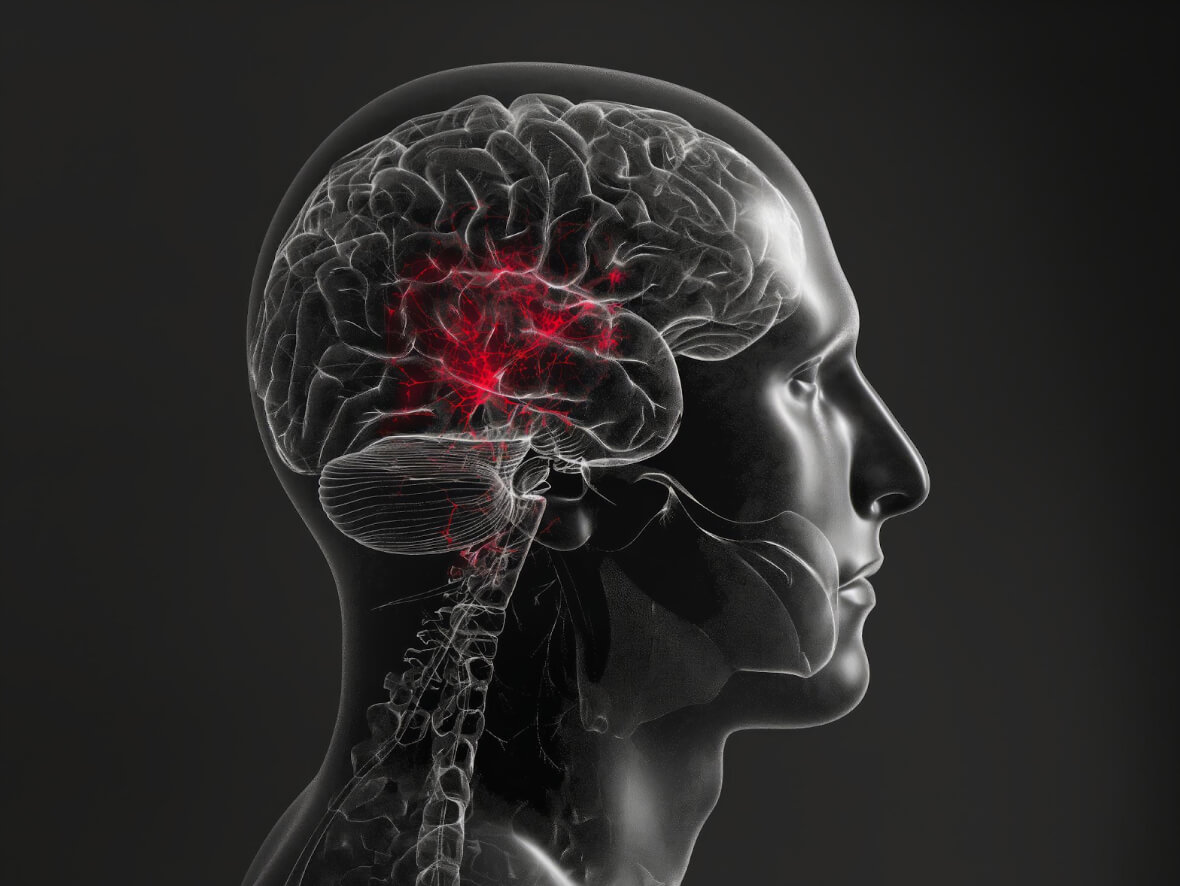
What are the symptoms of a stroke?
Stroke (CVA) is a medical emergency that requires rapid intervention to reduce the risks of death or severe disability. Recognizing early signs can make the difference between recovery and serious complications. Stroke symptoms can vary depending on the area of the brain affected and the type of stroke, ischemic or hemorrhagic. However, there are certain common signs that indicate the need for immediate medical intervention.
- Sudden numbness or weakness of the face, arm, or leg, especially on one side of the body. For example, a person may have an asymmetrical smile (drooping corner of the mouth) or cannot raise one of their arms.
- Sudden confusion, difficulty speaking or understanding. Speech may become unclear or incoherent.
- Vision disturbances, such as blurred or double vision, appearing suddenly in one or both eyes.
- Sudden walking disorders, dizziness, loss of balance or motor coordination.
- Severe headache, of sudden onset, without known cause. A lightning and intense headache, different from any other headache episode experienced before, may particularly signal a hemorrhagic stroke (for example, the rupture of a cerebral aneurysm).
To quickly recognize a possible stroke, the acronym F.A.S.T. (from English) is used, also useful in Romanian:
- Face (Face) – Ask the person to smile. Observe if the corner of the mouth is drooping on one side.
- Arm (Arm) – Ask the person to raise both arms. An arm that involuntarily drops or cannot be raised indicates weakness.
- Speech (Speech) – Ask the person to repeat a simple sentence. Check if speech is unclear or strange.
- Time (Time) – Call 112 immediately if you notice any of these signs. Note the exact time of the first symptoms' onset, as this detail helps doctors decide the optimal treatment.
Stroke symptoms appear suddenly and can vary from person to person, but all are alarm signals that require immediate action. Lack of rapid intervention can lead to severe complications, including permanent paralysis, cognitive difficulties, or even death. If you notice any of the above symptoms in someone around you, don't wait, seek emergency medical help!
Causes and risk factors of stroke
A stroke occurs when blood circulation to a part of the brain is interrupted, causing the death of nerve cells in that area. There are two main types of stroke, with different mechanisms:
- Ischemic stroke (approx. 85-87% of cases globally: caused by a blood clot that blocks a cerebral artery. This clot can be formed locally through the accumulation of atheroma plaque and thrombi (as happens in arteries narrowed by atherosclerosis), or it can come from elsewhere (for example, from the heart, in a patient with atrial fibrillation, clots formed in the heart can migrate to the brain).
- Hemorrhagic stroke (approx. 10-15% of cases): caused by the rupture of a blood vessel in the brain, leading to intracerebral bleeding. The most common cause is uncontrolled high blood pressure, which weakens the walls of cerebral arteries, but congenital vascular malformations (aneurysms, arteriovenous malformations) or coagulation disorders can also be at the basis. A special type of hemorrhagic stroke is subarachnoid hemorrhage, often caused by the rupture of a cerebral aneurysm; it typically manifests as a sudden and devastating headache ("the worst headache of your life").
Besides direct mechanisms, there are numerous risk factors that increase the probability of a stroke. Some factors cannot be modified: advanced age (the risk of stroke doubles with each decade after age 55), gender (men have a slightly higher risk of stroke at younger ages, while women, living longer, have a higher absolute number of strokes throughout life), genetic inheritance, and family history (if strokes have existed in the family, individual risk increases). However, most risk factors are related to lifestyle and treatable conditions, so they can be influenced through prevention:
- High blood pressure – is the number one risk factor for stroke. Permanently high pressure damages cerebral blood vessels, favoring both their blockage (through atherosclerosis) and rupture. Studies show that hypertension is at the basis of almost half of stroke cases worldwide. Fortunately, controlling blood pressure through medication and diet substantially decreases the risk of stroke.
- Heart disease and atrial fibrillation – Cardiac rhythm disorders (such as atrial fibrillation) and other heart diseases increase the risk of clot formation that can migrate to the brain. A transient ischemic attack (TIA, sometimes called a "mini-stroke") or a previous stroke also increase the probability of a subsequent stroke.
- Diabetes mellitus – Diabetes favors vascular lesions and is often associated with hypertension and dyslipidemia, increasing the risk of stroke. Diabetic people have a stroke risk 1.5-2 times higher than the general population.
- High cholesterol (hypercholesterolemia) – A high level of "bad" cholesterol (LDL) contributes to the deposition of atheroma plaques on the carotid and cerebral arteries, narrowing the vascular lumen. This atherosclerotic process sets the stage for an ischemic stroke.
- Obesity and metabolic syndrome – Excess body weight is associated with hypertension, diabetes, and dyslipidemia, all being vascular risk factors.
- Smoking – Cigarettes have multiple harmful impacts: nicotine increases blood pressure, carbon monoxide reduces blood oxygenation, and smoking itself causes endothelial lesions in vessels, favoring clots. Smokers have a much higher risk of stroke compared to non-smokers, and exposure to passive smoking can also increase the risk.
- Excessive alcohol consumption – Alcohol abuse increases blood pressure and triglycerides, favoring atherosclerosis and vascular accidents. Moderation is recommended (maximum one alcoholic drink per day for women and two for men).
- Sedentary lifestyle – Lack of physical activity contributes to obesity, hypertension, high cholesterol, and diabetes, thus indirectly increasing the risk of stroke. On the other hand, regular physical exercise has beneficial effects on blood pressure, weight, and vessel health, reducing the risk of stroke.
- Unhealthy diet – A diet rich in saturated fats, trans fats, and salt predisposes to hypertension and heart disease. Also, diets poor in vegetables and fruits are associated with a higher risk of stroke, while a high consumption of fresh fruits and vegetables has a demonstrated protective effect.
It is important to remember that these risks are cumulative. For example, a hypertensive and diabetic smoker has a very high risk of stroke, but adopting a healthy lifestyle and adequate treatment of medical problems can drastically reduce this risk. A large international study (INTERSTROKE) concluded that approximately 90% of all strokes are explained by ten modifiable risk factors (such as those mentioned above), suggesting that preventive measures can have a huge impact.
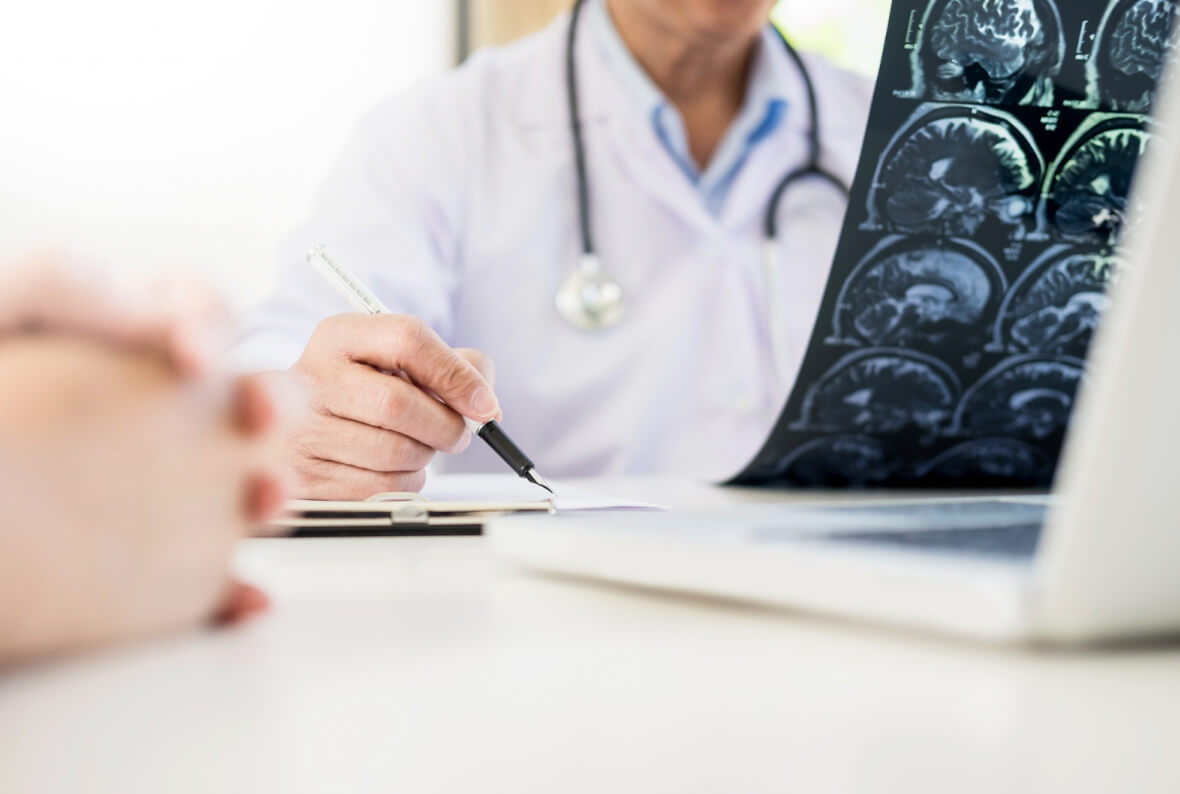
Diagnostic methods for stroke
When facing a suspicion of stroke, the diagnosis must be confirmed as quickly as possible in the hospital, because the type of stroke (ischemic or hemorrhagic) dictates the emergency treatment. Initial clinical and neurological evaluation (physical examination) is essential: the doctor will check the patient's state of consciousness, speech, movements, and reflexes, will measure blood pressure, and will look for signs that may suggest a stroke. At the same time, blood tests are frequently performed (including blood glucose – to exclude hypoglycemia with symptoms similar to stroke, coagulation tests, and markers that may indicate other causes). An electrocardiogram (ECG) can identify arrhythmias like atrial fibrillation, and an echocardiography (heart ultrasound) can look for blood clots in the heart that could migrate to the brain.
However, the most important investigation is brain imaging. This allows immediate distinction between an ischemic stroke (flow stoppage) and a hemorrhagic one (bleeding), which is impossible to establish based on symptoms alone. Imaging techniques used include:
- Computed tomography (CT) scan without contrast – This is the first investigation performed in an emergency, due to its speed and availability. CT can immediately detect cerebral hemorrhage and indirect signs of ischemic stroke, allowing exclusion of hemorrhage before administering treatment. Sometimes, it is supplemented with angio-CT (to locate arterial blockage) or perfusion CT (to evaluate affected brain areas).
- Magnetic resonance imaging (MRI) – It is more sensitive than CT in detecting early ischemic stroke and can identify intracerebral hemorrhages. However, emergency MRI is not available in all hospitals and takes longer. MR angiography and MR venography are used for detailed evaluation of cerebral vessels.
- Doppler ultrasound of carotid and vertebral arteries – Allows detection of arterial stenosis and atherosclerotic plaques that can cause stroke.
- Cerebral angiography – An invasive method rarely used only for diagnosis, but essential for identifying aneurysms or vascular malformations.
In specific cases, lumbar puncture (for subarachnoid hemorrhages undetected by CT) or genetic/metabolic tests may be performed in young patients without obvious risk factors.
Treatment options for stroke
Stroke treatment depends on the type of stroke (ischemic or hemorrhagic) and the time elapsed since the onset of symptoms. Rapid medical intervention can save lives and significantly reduce the degree of disability remaining after stroke.
1. Treatment of ischemic stroke (by arterial blockage)
The main goal is to restore blood flow to the affected brain area as quickly as possible. With each minute a clot blocks circulation, millions of neurons can suffer irreversible damage, which is why "time means brain." Treatment options include:
Intravenous (IV) medicinal thrombolysis:
This treatment involves administering tissue plasminogen activator (tPA) to dissolve the clot blocking circulation. It is effective if administered within the first 3-5 hours after the onset of stroke. Although it improves recovery, there is a risk of hemorrhage, so doctors carefully check for contraindications.
Mechanical thrombectomy
For large clots blocking important arteries, a minimally invasive procedure is used – a catheter inserted through the femoral artery is guided to the brain, where a device extracts the clot. This method is effective up to 6 hours after onset (in special cases, up to 24 hours).
Adjuvant treatments and prevention of complications
Patients receive acetylsalicylic acid (aspirin) in the first 24-48 hours (if they do not have cerebral bleeding), to prevent the formation of new clots. Blood pressure and blood glucose are monitored, and in case of severe carotid stenosis, carotid endarterectomy (removal of atheroma plaque) or angioplasty with stent may be necessary.
2. Treatment of hemorrhagic stroke (cerebral bleeding)
In the case of a hemorrhagic stroke, the approach is different – we no longer have a clot to dissolve, but a ruptured artery to repair and hemorrhage to control. The basic principles are stopping the bleeding, preventing its extension, and reducing intracranial pressure caused by the accumulation of blood in the skull. Specific measures include:
Stabilization and control of intracranial pressure
Patients are admitted to intensive care, where they are administered medication to lower blood pressure and reduce cerebral edema. If the patient was taking anticoagulants, these are counteracted with antidotes to stop bleeding. In case of high intracranial pressure, a ventricular drain may be introduced to eliminate cerebrospinal fluid.
Neurosurgical interventions
- Evacuation of the hematoma – Performed through craniotomy to remove accumulated blood and reduce pressure on the brain.
- Treatment of aneurysms – If the hemorrhage is caused by a ruptured aneurysm, it can be treated by surgical clipping (placing a metal clip at its base) or by endovascular coiling (filling the aneurysm with metal coils to prevent further bleeding).
- Treatment of arteriovenous malformations (AVM) – If the stroke was caused by an AVM, it can be surgically removed or treated by stereotactic radiosurgery.
It should be noted that, after a stroke, preventing a second vascular accident (secondary prevention) is very important. This involves aggressive treatment of risk factors: strict control of blood pressure, cholesterol (including with statins), maintaining blood glucose in targets, quitting smoking, etc., as well as long-term administration of medicines indicated by the doctor (usually antiplatelet drugs such as aspirin or anticoagulants if the patient has atrial fibrillation). Following these recommendations, the risk of a new stroke can be considerably reduced.
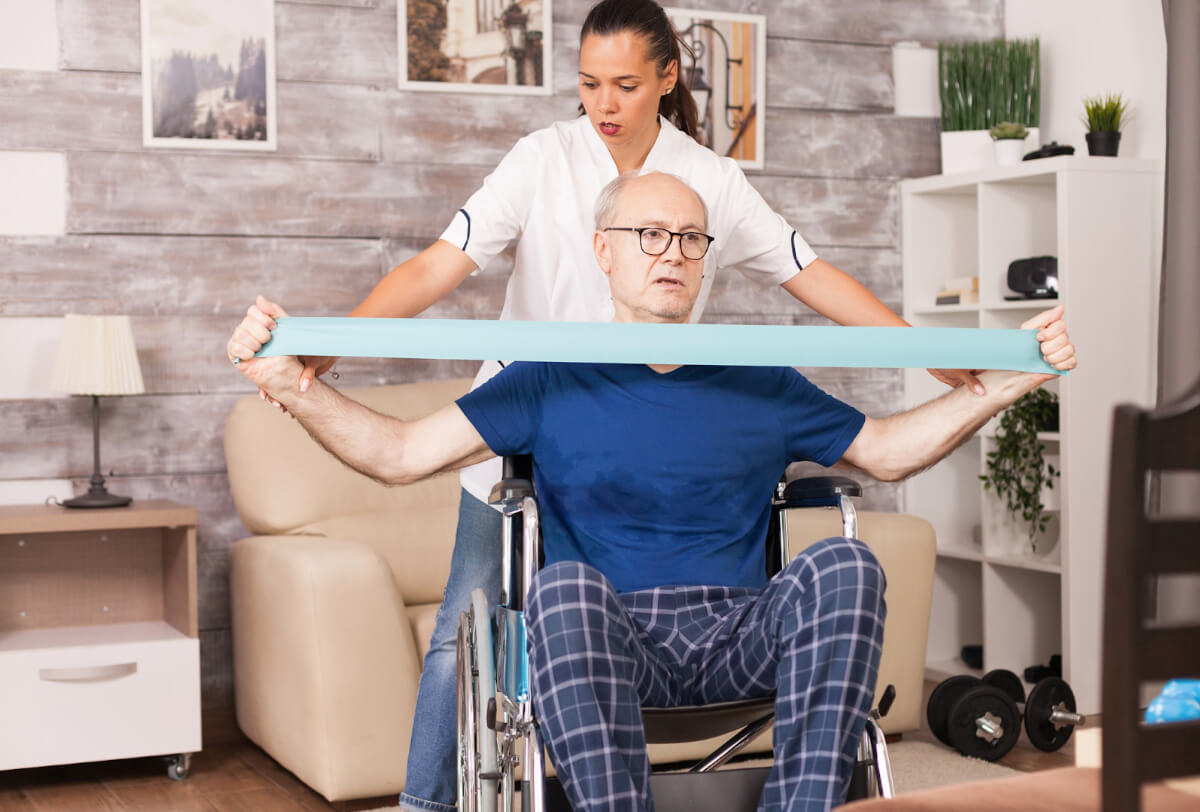
Recovery after a stroke
Recovery after stroke is a long-term process, requiring a multidisciplinary approach, including physical therapy, occupational therapy, speech therapy, psychological support, and the use of assistive technologies. Also, family and close ones play a crucial role in supporting the patient throughout rehabilitation.
An essential element in stroke recovery is early initiation of rehabilitation. Studies show that starting therapy in the first 24-48 hours after patient stabilization improves functional prognosis and reduces the risk of secondary complications, such as muscle atrophy or thromboembolic complications.
Early rehabilitation helps with:
- Preventing muscle rigidity and contractures that can occur due to prolonged immobilization.
- Maintaining blood flow and preventing deep vein thrombosis, especially in patients with reduced mobility.
- Improving neuroplasticity – the process by which other regions of the brain can partially take over functions of areas affected by stroke.
Depending on the severity of the stroke, rehabilitation can begin in the hospital and continue in specialized recovery centers or at home. And the most popular recovery therapies are:
Physical therapy
Physical therapy is one of the main pillars of recovery after a stroke. It involves personalized exercises, adapted to each patient's needs, to help them regain muscle strength, coordination, and balance.
The objectives of physical therapy include:
- Regaining lost movements: progressive exercises help the patient regain control over affected limbs.
- Improving balance: many people who have suffered a stroke have difficulty walking and coordinating, which increases the risk of falls.
- Training walking: using assistive devices (walker, cane, orthoses) until complete balance is regained.
- Preventing muscle atrophy and joint rigidity, through stretching and mobilization exercises.
Depending on the severity of the stroke, physical therapy can vary from simple exercises, such as raising an arm, to complex walking and coordination training.
Occupational therapy
Besides restoring motor functions, another important objective of recovery is regaining independence in daily activities. This is where occupational therapy comes in, helping the patient relearn basic activities, such as:
- Dressing and personal care.
- Cooking and meal preparation.
- Writing, using cutlery, and other tasks requiring fine motor skills.
- Adapting the home to be more accessible to the patient.
Regaining independence contributes to increasing self-confidence and better social reintegration of the patient.
Speech therapy
A significant number of patients who suffer a stroke develop aphasia (difficulties in speaking and understanding language) or dysphagia (difficulties in swallowing). Speech therapy is essential for recovering communication skills and the ability to eat safely.
The speech therapist works with the patient to:
- Improve word articulation and control over facial muscles.
- Train the patient to recognize and express words more clearly.
- Practice safe swallowing to prevent aspiration (food entering the lungs) and pulmonary complications.
Progress in speech therapy varies from patient to patient, and language recovery can take months or even years.
Psychological support: combating depression and anxiety
Depression and anxiety are common after a stroke, affecting approximately 30-50% of survivors, studies say. Patients may experience feelings of frustration, lack of motivation, and fear of recurrence.
Psychological therapy plays a crucial role in rehabilitation, helping the patient to:
- Develop strategies to adapt to new challenges.
- Maintain a positive mindset and regain confidence.
- Manage stress and fear of a new stroke.
Involvement of support groups and family is also essential for the patient's emotional recovery.
Assistive technologies
For patients with persistent disabilities, assistive technologies can significantly improve independence and quality of life. These include:
- Orthoses and prostheses for supporting and correcting movements.
- Canes, walkers, or wheelchairs to facilitate mobility.
- Assisted communication devices for patients with severe speech difficulties.
These tools provide patients with a greater degree of autonomy and safety in daily activities.
The role of family in recovery
Family plays a crucial role in the rehabilitation process, providing emotional support and practical help in day-to-day life. Educating family members about the course of recovery, symptom management, and prevention of recurrences can make a big difference in the patient's progress.
Interaction with patients must be full of patience and encouragement. Creating a safe environment, avoiding isolation, and maintaining a positive attitude are essential factors in recovery.
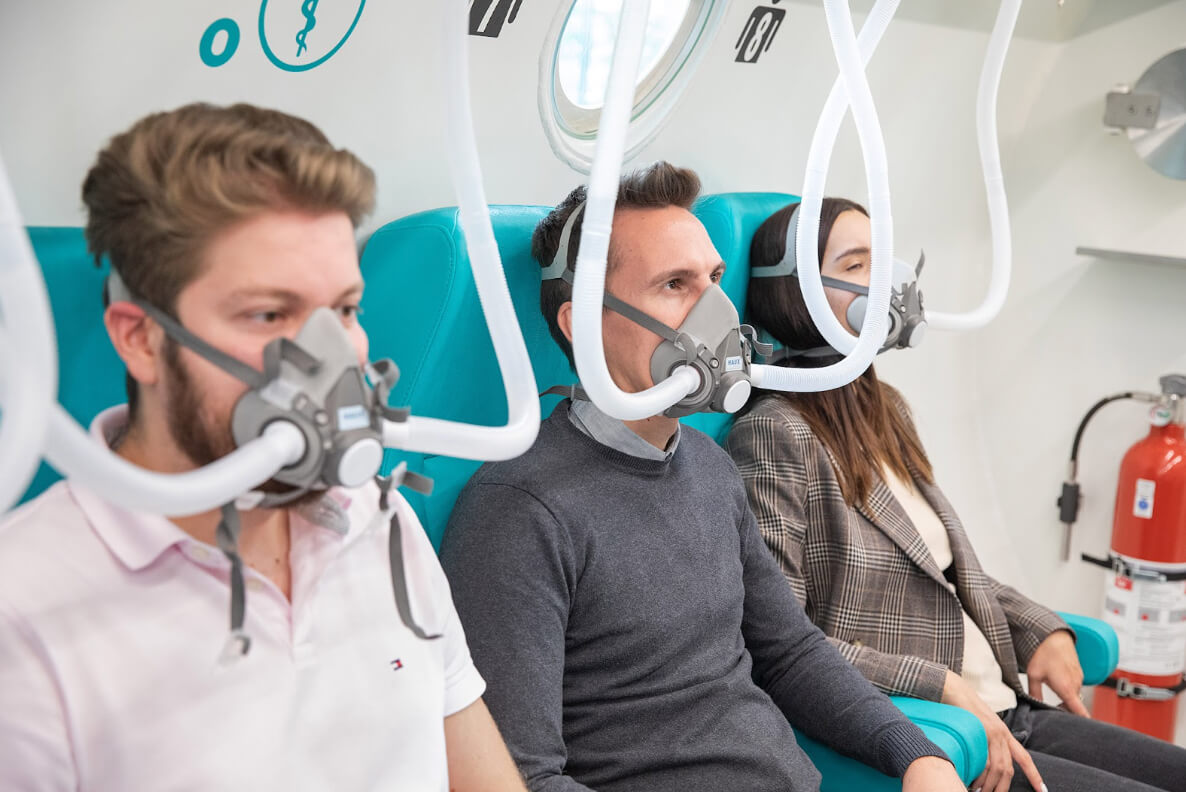
Hyperbaric therapy and stroke recovery
Hyperbaric oxygen therapy (HBOT) works by increasing the level of oxygen dissolved in plasma, which improves the supply of oxygen to affected tissues. This mechanism can have significant effects on the brain after a stroke, especially in patients who have areas of hypoxic but still viable brain tissue.
1. Increasing oxygen delivery to areas affected by stroke
After an ischemic stroke, a part of the brain no longer receives enough oxygen due to blocked blood flow. This area is divided into two distinct regions:
- The infarct core – the region where cell death is irreversible.
- The ischemic penumbra – an area around the infarct, where cells are affected but still viable and can be saved by adequate oxygenation.
Studies show that hyperbaric therapy increases the partial pressure of oxygen (pO₂) in blood, which allows oxygen to penetrate more efficiently even into poorly vascularized tissues. Unlike oxygen transported by hemoglobin (which can reach a saturation point), oxygen dissolved directly in plasma is able to diffuse more easily through damaged vessels and reach cells in the ischemic penumbra, thus preventing their death.
2. Stimulating neuroplasticity and neuronal recovery
Neuroplasticity is the brain's ability to reorganize itself, by creating new connections between neurons to compensate for areas affected by stroke. Studies show that HBOT stimulates neuroplasticity through several mechanisms:
- Increases the expression of neurotrophic factors (such as BDNF – Brain-Derived Neurotrophic Factor), which support the survival and regeneration of neurons.
- Activates genes involved in synaptogenesis and neurogenesis, favoring the growth of new neuronal connections.
- Increases capillary density in peri-infarct areas, facilitating better blood flow and transport of nutrients necessary for neuronal repair.
A study published by Hadanny & Efrati in 2016 demonstrated that patients treated with hyperbaric oxygen showed increased activation of the cerebral cortex in areas surrounding the infarct, suggesting an improvement in cognitive and motor functions due to stimulation of neuroplasticity.
3. Reducing inflammation and oxidative stress
Following a stroke, the body activates an inflammatory response, which can lead to additional destruction of brain tissue. Hyperbaric therapy reduces inflammation by:
- Decreasing the production of proinflammatory cytokines (IL-1, IL-6, TNF-α), which contribute to neuronal destruction.
- Reducing oxidative stress, by increasing the level of antioxidant enzymes (superoxide dismutase, catalase) that neutralize free radicals formed as a result of ischemia.
- Limiting neuronal apoptosis (programmed cell death) through anti-inflammatory mechanisms.
These effects can help maintain neuronal viability and improve post-stroke recovery.
4. Stimulating angiogenesis (formation of new blood vessels)
Angiogenesis is the process by which the body develops new blood vessels to replace those affected by stroke. HBOT favors this process by:
- Increasing vascular endothelial growth factor (VEGF), which stimulates the formation of new capillaries.
- Increasing cerebral blood flow in affected areas.
- Functional recovery through improved perfusion in peri-infarct regions.
A study published in PLOS ONE (Efrati et al., 2013) showed that patients who underwent 40 sessions of hyperbaric therapy presented an improvement in motor and cognitive functions, confirmed by brain imaging, which highlighted better vascularization of affected areas.
5. Reducing cerebral edema and improving cerebral metabolism
After a stroke, cerebral edema contributes to the aggravation of lesions by increasing intracranial pressure and reducing tissue oxygenation. HBOT helps with:
- Reducing cerebral edema through its effect on regulating vascular permeability.
- Stabilizing the blood-brain barrier, preventing the penetration of inflammatory substances into the brain.
- Increasing ATP production (the energy molecule of cells), which supports neuronal functions and cerebral metabolism.
When is hyperbaric therapy indicated for stroke?
- In the acute phase: There are studies showing that administering hyperbaric therapy in the first hours after a stroke can bring significant benefits. Researchers suggest that early intervention could reduce the size of the cerebral infarct and, implicitly, the severity of long-term neurological effects.
- In the chronic phase: Recent studies suggest that hyperbaric therapy can improve functional recovery in patients who suffered a stroke months or even years ago.
- Most research on hyperbaric therapy has focused on ischemic stroke, where the results are promising. HBOT can support the recovery of affected tissues by increasing oxygenation at the cerebral level. In the case of hemorrhagic stroke, studies are still ongoing, but there are interesting premises that deserve further investigation.
In recent years, hyperbaric therapy has gained more and more ground internationally, against the background of promising research and emerging clinical evidence supporting its effectiveness in restoring neurological function, reducing inflammation, and stimulating neuroplasticity. In this section, you can find an entire collection of studies supporting the beneficial effects of hyperbaric therapy in post-stroke patients.
Even though it is not yet included in standard protocols for stroke treatment in national medical guidelines, in many countries with advanced medical systems – such as Germany, Israel, USA, Japan, or the United Kingdom – hyperbaric therapy is used increasingly frequently as complementary therapy, especially in specialized clinics and centers for neurological recovery. Patients interested in this treatment should consult a neurologist or specialist in hyperbaric medicine to determine if HBOT is suitable for their case. And if you want to read more about this, you can do so in this article on Hyperbaric oxygen therapy in stroke recovery.
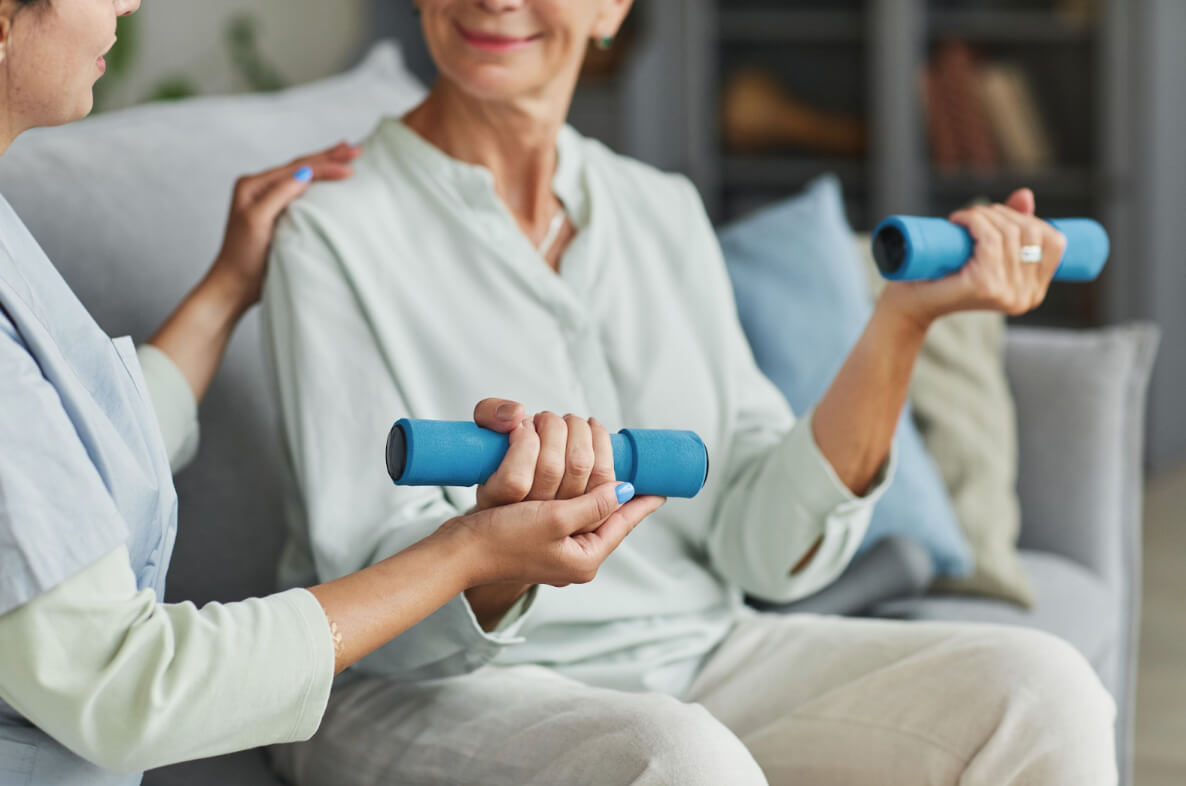
Stroke prevention – evidence-based practical advice
The best "strategy" against stroke is prevention. Given that an overwhelming proportion of risk factors for stroke is related to our lifestyle, adopting healthy habits and following medical recommendations can drastically reduce the risk of stroke. Here are some practical tips, supported by medical research, to prevent a first stroke (or a recurrence):
Monitor and control blood pressure
Measure your blood pressure periodically and follow the prescribed treatment if you have hypertension. Aim for values below 140/90 mmHg or according to your doctor's instructions. Hypertension is the main risk factor for stroke, and controlling it significantly reduces the risk. Reduce salt intake (excess sodium increases blood pressure) and consume foods rich in potassium (fruits and vegetables).
Adopt a healthy diet for heart and vessels
Consume fresh vegetables and fruits daily – a meta-analysis showed that increased consumption of fruits and vegetables is associated with a decreased risk of stroke. Opt for whole grains, lean proteins (fish, white meat), and healthy fats (olive oil, avocado, nuts), as in the Mediterranean diet. Avoid saturated and trans fats (fried foods, fast food) and limit dietary cholesterol to prevent atherosclerosis. Moderate alcohol consumption – excess increases vascular risk.
Exercise regularly
Regular physical activity helps maintain a healthy weight, lowers blood pressure, improves cholesterol profile, and insulin sensitivity. Aim for at least 150 minutes of moderate aerobic exercise per week (for example, brisk walking, cycling) or according to your doctor's recommendations, especially if you have pre-existing conditions. Even daily walks and climbing stairs at a brisk pace can count – avoiding sedentary lifestyle is the key.
Quit smoking and avoid secondhand smoke
Each cigarette smoked affects blood vessels and increases blood pressure. Complete smoking cessation reduces the risk of stroke over time and brings immediate benefits to the heart and lungs. If you don't smoke, stay away from places with cigarette smoke – passive exposure can also contribute to stroke risk. Ask your doctor for support with quitting strategies (counseling, nicotine replacement therapies, etc.).
Keep weight and diabetes under control
Maintain a body mass index (BMI) within normal limits (18.5–24.9) through balanced diet and exercise. If you have diabetes, strictly follow the regimen and medication to maintain normal blood glucose levels. Uncontrolled diabetes damages blood vessels over time and is a major risk factor for stroke, but good metabolic control can reduce this risk.
Treat dyslipidemia and heart diseases
Check your cholesterol and triglyceride profile through blood tests. If LDL cholesterol ("bad" cholesterol) is elevated, discuss with your doctor about diet and, if necessary, medications (such as statins). Controlling dyslipidemia slows down atherosclerosis and reduces the chance of ischemic stroke. Also, if you have atrial fibrillation or other arrhythmias, follow the indicated treatment (including anticoagulants if prescribed, to prevent clots that can migrate to the brain).
Manage stress and have regular medical check-ups
Chronic stress and depression have been associated with a higher risk of cardiovascular events, including stroke. Try stress reduction techniques (meditation, breathing exercises, yoga) and don't hesitate to seek specialized help if you're dealing with anxiety or depression. Go to periodic medical consultations to check your health status – many risk conditions (such as hypertension or hypercholesterolemia) can be "silent" and detected only through screening.
Stroke remains a major challenge for public health, but education and prevention can save lives. Knowing the symptoms (to act quickly) and reducing risk factors through lifestyle changes and preventive medical treatment are essential. The optimistic message provided by research is that up to 80-90% of strokes can be prevented through appropriate measures.
Education, prevention, and rapid action – the key in the fight against stroke
Stroke (CVA) remains one of the most serious neurological conditions, having a major impact on public health globally and nationally. The fact that Romania faces one of the highest incidences of stroke in Europe emphasizes the need for urgent prevention and awareness measures.
This article has highlighted the essence of knowing stroke symptoms, the importance of rapid diagnosis, and current treatment and recovery options. Although a stroke can occur suddenly, in many cases it can be prevented. Adopting a healthy lifestyle – through blood pressure control, smoking cessation, maintaining an optimal weight, and regular monitoring of cardiovascular health – can significantly reduce the risk of this condition.
Recovery after a stroke is a complex process, requiring an integrated approach, involving a multidisciplinary team and the active support of family and community. When interventions are personalized and well-coordinated, the chances of functional recovery can increase considerably.
In addition, innovative therapies such as hyperbaric oxygen therapy bring promising perspectives in post-stroke patient recovery, significantly contributing to improving neurological functions and accelerating the healing process.
The essential message is clear: every minute counts! Rapid recognition of symptoms and immediate medical intervention can save lives and reduce the severity of disabilities caused by a stroke. At the same time, prevention through a balanced lifestyle and following medical recommendations are the most effective long-term "treatments."
Finally, information and awareness remain the most powerful weapons in the fight against stroke. Through education and responsible actions, we can contribute to reducing the number of cases and improving the quality of life for those affected by this disease.



